9.6: 9.4
- Page ID
- 123634
\( \newcommand{\vecs}[1]{\overset { \scriptstyle \rightharpoonup} {\mathbf{#1}} } \)
\( \newcommand{\vecd}[1]{\overset{-\!-\!\rightharpoonup}{\vphantom{a}\smash {#1}}} \)
\( \newcommand{\id}{\mathrm{id}}\) \( \newcommand{\Span}{\mathrm{span}}\)
( \newcommand{\kernel}{\mathrm{null}\,}\) \( \newcommand{\range}{\mathrm{range}\,}\)
\( \newcommand{\RealPart}{\mathrm{Re}}\) \( \newcommand{\ImaginaryPart}{\mathrm{Im}}\)
\( \newcommand{\Argument}{\mathrm{Arg}}\) \( \newcommand{\norm}[1]{\| #1 \|}\)
\( \newcommand{\inner}[2]{\langle #1, #2 \rangle}\)
\( \newcommand{\Span}{\mathrm{span}}\)
\( \newcommand{\id}{\mathrm{id}}\)
\( \newcommand{\Span}{\mathrm{span}}\)
\( \newcommand{\kernel}{\mathrm{null}\,}\)
\( \newcommand{\range}{\mathrm{range}\,}\)
\( \newcommand{\RealPart}{\mathrm{Re}}\)
\( \newcommand{\ImaginaryPart}{\mathrm{Im}}\)
\( \newcommand{\Argument}{\mathrm{Arg}}\)
\( \newcommand{\norm}[1]{\| #1 \|}\)
\( \newcommand{\inner}[2]{\langle #1, #2 \rangle}\)
\( \newcommand{\Span}{\mathrm{span}}\) \( \newcommand{\AA}{\unicode[.8,0]{x212B}}\)
\( \newcommand{\vectorA}[1]{\vec{#1}} % arrow\)
\( \newcommand{\vectorAt}[1]{\vec{\text{#1}}} % arrow\)
\( \newcommand{\vectorB}[1]{\overset { \scriptstyle \rightharpoonup} {\mathbf{#1}} } \)
\( \newcommand{\vectorC}[1]{\textbf{#1}} \)
\( \newcommand{\vectorD}[1]{\overrightarrow{#1}} \)
\( \newcommand{\vectorDt}[1]{\overrightarrow{\text{#1}}} \)
\( \newcommand{\vectE}[1]{\overset{-\!-\!\rightharpoonup}{\vphantom{a}\smash{\mathbf {#1}}}} \)
\( \newcommand{\vecs}[1]{\overset { \scriptstyle \rightharpoonup} {\mathbf{#1}} } \)
\( \newcommand{\vecd}[1]{\overset{-\!-\!\rightharpoonup}{\vphantom{a}\smash {#1}}} \)
Einheit 9.4 (online)
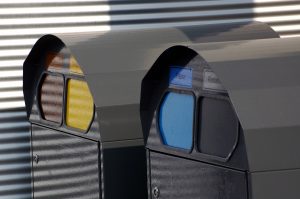 |
Warum gibt es Farben auf dem Mülleimer? Was bedeuten die Farben? |
![]() Was ist Mülltrennung? Nicht alle Länder recyclen wie die Deutschen. Duncan kommt aus Neuseeland und wohnt in einer WG in Deutschland. Er lernt sehr schnell, was “Mülltrennung” bedeutet. Sehen Sie das Video an, bevor Sie mehr über Mülltrennung lernen.
Was ist Mülltrennung? Nicht alle Länder recyclen wie die Deutschen. Duncan kommt aus Neuseeland und wohnt in einer WG in Deutschland. Er lernt sehr schnell, was “Mülltrennung” bedeutet. Sehen Sie das Video an, bevor Sie mehr über Mülltrennung lernen.
![]() Mülltrennung in Deutschland. Lesen Sie den Text.
Mülltrennung in Deutschland. Lesen Sie den Text.
![]() Wie trenne ich meinen Müll? Sehen Sie die zwei Videos über Mülltrennung an.
Wie trenne ich meinen Müll? Sehen Sie die zwei Videos über Mülltrennung an.
1. Wie trenne ich den Müll in Deutschland?
2. Mülltrennung in Deutschland
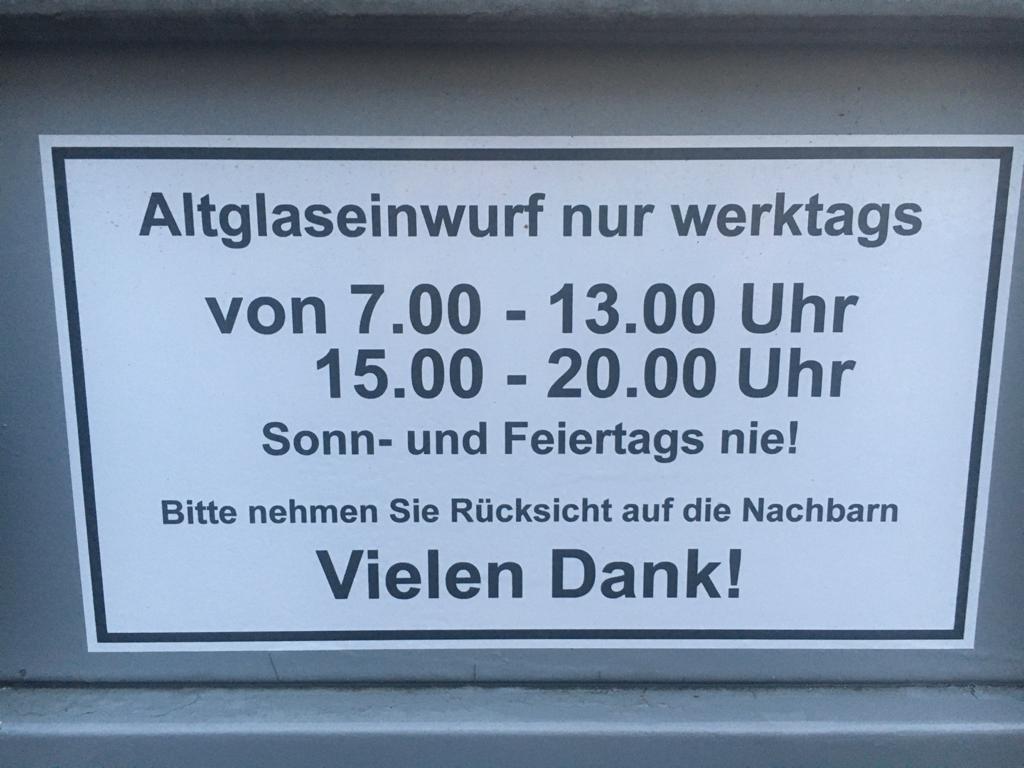 |
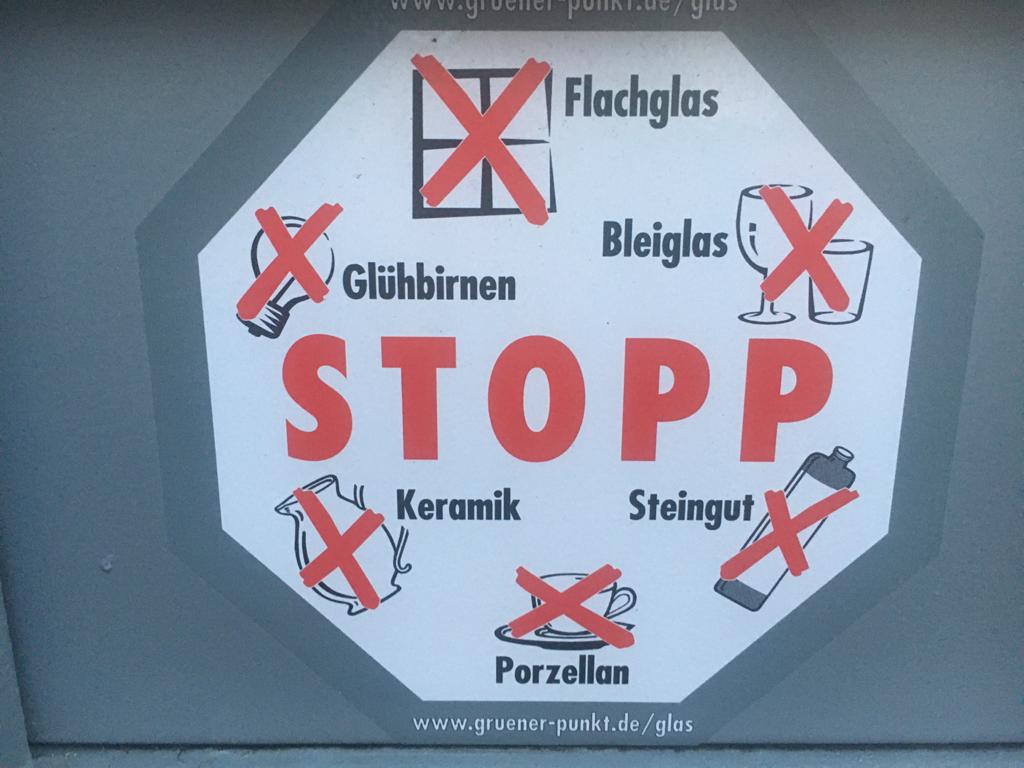 |
![]() Übung 1. Sortieren Sie den Müll in die richtige Tonne.
Übung 1. Sortieren Sie den Müll in die richtige Tonne.
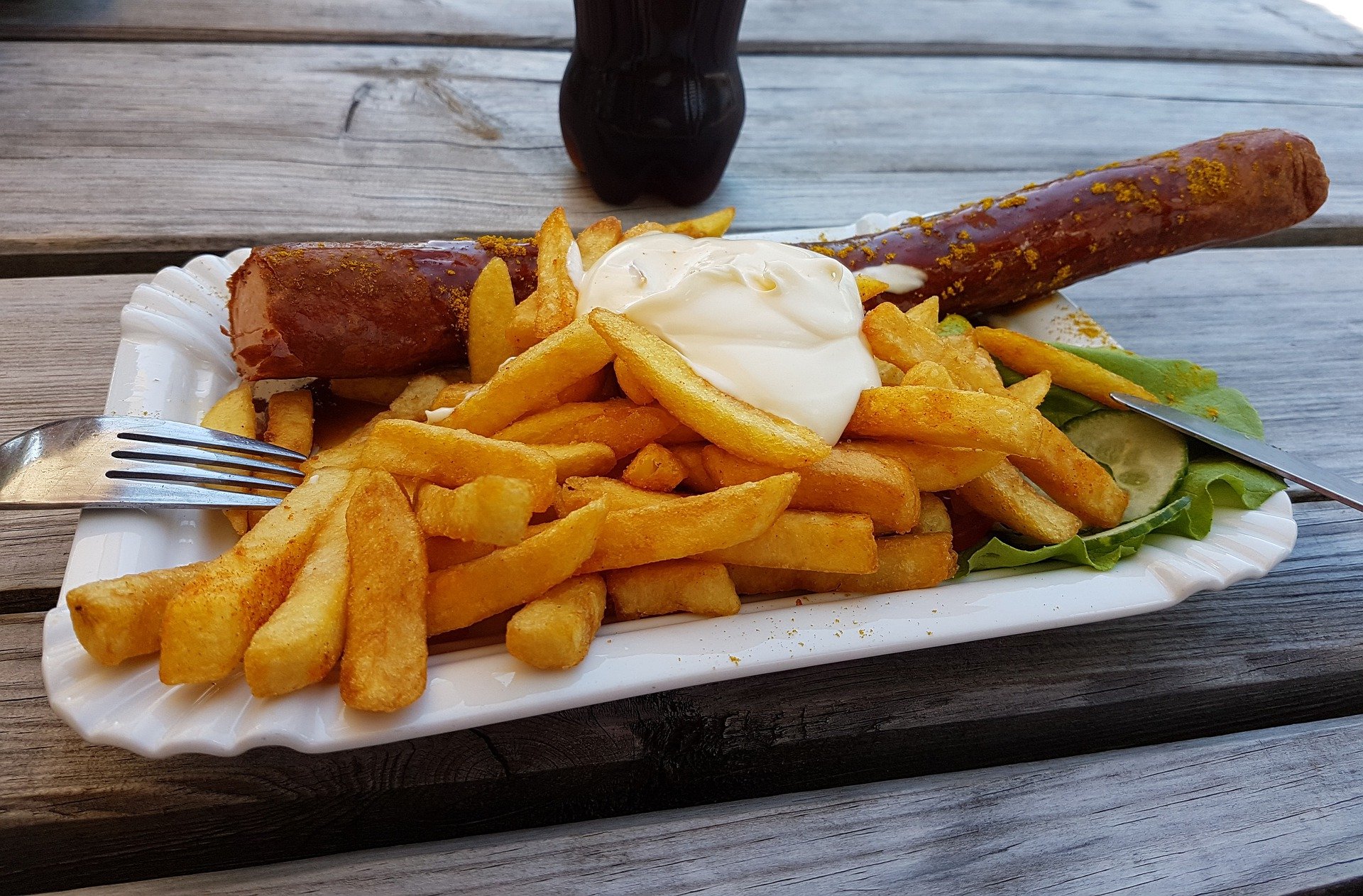 |
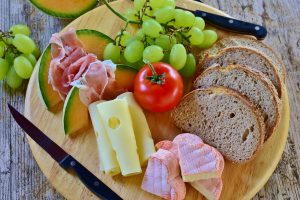 |
Mittagessen vs. Abendessen
|
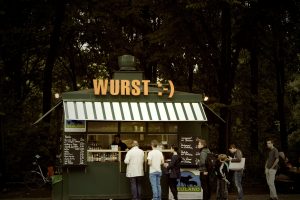 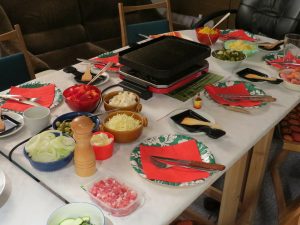 |
This video gives you an overview of Mittagessen vs. Abendessen as well as regional dishes and of course Kaffee und Kuchen.
Would you like to learn more about Abendessen or what is sometimes called Abendbrot? Watch these videos:
![]() Was wissen Sie jetzt? Klicken Sie hier für Quiz 9.4.
Was wissen Sie jetzt? Klicken Sie hier für Quiz 9.4.
![]() Oral Presentation: Regionale Spezialitäten
Oral Presentation: Regionale Spezialitäten
For your oral presentation, you will research a regional food or beverage from the German-speaking countries. You can work in pairs or by yourself.
Please sign up for a specific item on the list on eClass. In your presentation, describe the food/beverage, how it is made, what it consists of, in what region it is consumed, any historical background you may find about its origins, etc. You can also research an item that has different names in different regions and tell us about that.
Your presentation should be no longer than two slides: include some images and short text in bullet points and record your narration (1-2 minutes per person). In your narration, please do not just read out your bullet points, but narrate in full sentences. Make sure you cite your sources (for images) and write your own narration. Do not copy text from any websites that you visit.
After you submit your presentation on eClass, you will read/listen to 3 presentations of your classmates (your choice). “Reply” to these three presentations in German and comment whether you would like to try the item or not and why.
This oral presentation will be assessed according to the Rubric for Oral Presentation.
Extra Practice (optional):
![]() Video Serie – Nicos Weg
Video Serie – Nicos Weg
Sehen Sie das Video über Recycling und Mülltrennung an und machen Sie alle Übungen.
Media Attributions
- garbage-1506937_1920 © Friedrich Frühling is licensed under a Public Domain license
- play © IO-Images is licensed under a Public Domain license
- book © IO-Images is licensed under a Public Domain license
- IMG-20201230-WA0004 © ckost is licensed under a Public Domain license
- IMG-20201230-WA0005 © ckost is licensed under a Public Domain license
- star © IO-Images is licensed under a Public Domain license
- eat-4346396_1920 (1) © Jens Thramann is licensed under a Public Domain license
- bread-3571266_1920 © RitaE is licensed under a Public Domain license
- snack-bar-413742_1920 © Picography is licensed under a Public Domain license
- raclette-81401_1920 © Hans Braxmeier is licensed under a Public Domain license
- link © IO-Images is licensed under a Public Domain license
- check mark © janjf93 adapted by Solomon Hajramezan is licensed under a Public Domain license
- keyboard © IO-Images is licensed under a Public Domain license

